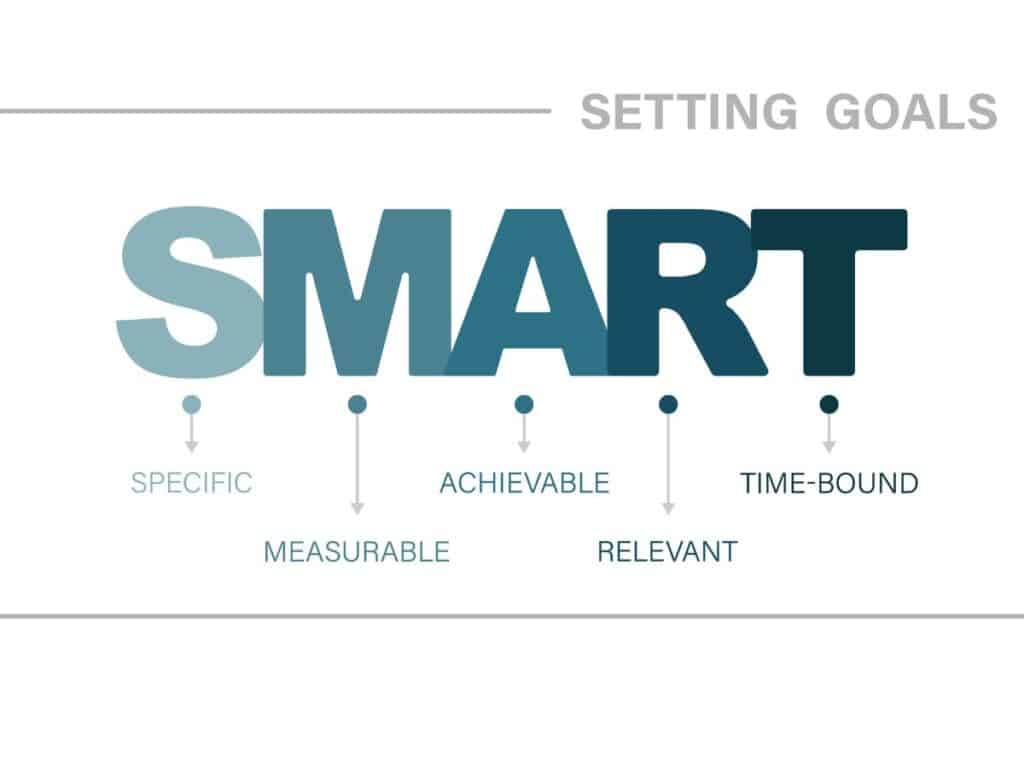40 SMART Business Goals Examples You Can Set In 2024
Our aspirations are the driving force behind personal growth and attaining business opportunities. Through visualizing ideal outcomes and setting effective business goals, we can make our aspirations tangible and prepare for success. SMART business goals help us focus and reevaluate our goals as needed.
Defining business goals according to the SMART – Specific, Measurable, Attainable, Relevant, and Time-bound – framework ensures organizational success. The framework can be directed towards any area of a business including customer service, sales, business growth, and employees.
The core difference between a successful and a failing business is the path created to get there. Here are 40 examples of SMART business goals you can set in 2024 to ensure success.
Table of Contents
- What Are Business Goals?
- 10 Business Goals For Customer Service
- 1. Increase Customer Satisfaction
- 2. Reduce Customer Wait Time
- 3. Improve Resolution Time
- 4. Improve Troubleshooting Skills
- 5. Increase Customer Interaction
- 6. Improve Net Promoter Score
- 7. Respond To All Customer Feedback
- 8. Reduce Cost Per Interaction
- 9. Promote Self-Service
- 10. Improve Customer Service Employees’ Work Satisfaction
- 10 Business Goals for Sales
- 10 Business Goals for Business Growth
- 10 Business Goals for Employees
- How To Set Business Goals?
- How To Achieve Set Goals?
- Wrap-Up
- PIN THIS FOR LATER…

What Are Business Goals?
Business goals are the resolutions a company anticipates accomplishing in a specific time frame to achieve a desired result. Business goals can be related to the company as a whole or specific departments and team members.
Goals define the purpose and give employees a clear understanding of the company’s vision and desired outcomes. Long-term goals drive direction and strategy. Short-term goals are the stepping stones to reaching those long-term goals; they help compartmentalize processes to ensure team members do not lose sight of the bigger picture.
Implementing SMART goals gives a company the blueprint to turn business aspirations into a reality. Arthur Miller, George Doran, and James Cunningham initially presented the concept of SMART goals in 1981, stating there are five key guidelines – Specific, Measurable, Attainable, Relevant, and Time-bound – to use when defining goals.
The SMART goal framework is impactful and efficient for marketing strategies, sales, customer service, employee growth, project management, and overall business growth. The system provides a model that helps identify strengths, tracks progress, and creates room for improvement.
“The trouble with not having a goal is that you can spend your life running up and down the field and never score.” – Bill Copeland.
10 Business Goals For Customer Service
Customer service goals are the best way to motivate team members to grow while ensuring consistently great customer service. Implementing SMART customer service goals can elevate your team’s performance, boost customer satisfaction, increase sales and loyalty, and create new conversions.
Here are ten examples of SMART customer service goals to help your team implement this framework to improve your customer experience.

1. Increase Customer Satisfaction
CSAT (Customer Satisfaction Score) is an essential Key Performance Indicator. It is a valuable indication of customer happiness and their experience of the service. Increased customer satisfaction increases loyalty and the likelihood of purchasing your product or service again.
According to a Qualtrics XM Institute survey, consumers are 3.5 times more likely to repurchase from a brand after a positive customer experience.
Use basic customer surveys to measure customer satisfaction and to determine whether they are happy with your service.
| SMART goal example: We will improve our CSAT by 7% in the next quarter. |
2. Reduce Customer Wait Time
A slow response is a key indicator of poor customer service. Leaving your customers waiting can lead to frustration and a negative customer experience.
Maintaining a short waiting period is vital to improve overall customer satisfaction. Prioritize your contact channels to ensure you respond quickly and efficiently to clients despite the communication channel.
- Emails: Measure the average first reply time or the total resolution time.
- Phone support: Measure how long clients spend on hold.
- Social media: Measure by the response time average.
| SMART goal example: We will improve email response times from 48 to 24 hours and decrease the average first reply time on phone support from 2 hours to 1 hour or less by August 31st. |
3. Improve Resolution Time
In addition to reducing customers’ wait time, it is vital to improving the resolution time. The customer service team must provide clients with the fastest solution possible without compromising on the quality of the resolution.
Aim to achieve first call resolution (FCR), where your customer service agents accurately address customers’ needs on the first attempt. This will prevent a follow-up call.
Calculate FCR by dividing the total support calls resolved on the first attempt by the total calls received in the given period.
| SMART goal example: We will improve our FCR from 70% to 80% within three months. |
4. Improve Troubleshooting Skills
Customer support agents must have a firm grasp of troubleshooting issues by using techniques to identify the root cause of customer problems and solve them.
Equip your agents with high-standard troubleshooting skills and training to ensure they resolve customer problems quickly and effectively.
| SMART goal example: Improve troubleshooting criteria score from 3.1 to 4.5 by December 31st. |
5. Increase Customer Interaction
Increasing customer interaction leads to increased sales, customer retention, and improved business results.
A Harvard study shows that 73% of customers use multiple channels during their purchase journey. Consider increasing customer interaction and centricity via an omnichannel strategy.
An omnichannel will create a seamless, unified customer experience where they can engage with your brand across multiple channels. The Harvard study predicts that omnichannel shoppers spend approximately 4% more in-store and up to 10% more online than single-channel customers on shopping occasions.
| SMART goal example: Integrate Twitter, Facebook, and Instagram accounts to our help desk via built-in integration by the end of Q2. |
6. Improve Net Promoter Score
The net promoter score (NPS) reflects customers’ relationship with the brand. It also reflects the work of your customer service team and the company as a whole.
Aim to include NPS in your customer service strategy to measure the correlative impact that other SMART goals have, like minimizing customer response times or implementing omnichannel systems.
| SMART goal example: Increase quarterly NPS from 85% to 90% before the end of Q3. |
7. Respond To All Customer Feedback
Taking time to respond to customer feedback ensures that they feel heard and you’re validating their experience – good or bad. Responding to all feedback and reviews help preserve and improve customer engagement, retention, and trust. An even better result would be to use customer feedback to drive change.
Review your CSAT survey and communication channel data to calculate how much customer feedback the company receives weekly and determine the time needed to actively respond. Set time aside to ensure the team responds to customer feedback promptly.
| SMART goal example: Introduce 5% additional time per week for agents to respond to all customer feedback within a week. |
8. Reduce Cost Per Interaction
Cost per interaction is the average resource costs (capital and operational costs) needed for a single interaction. While telephone-only contact centers only calculate cost per call, omnichannel centers must measure each contact channel.
Companies can reduce cost per interaction by improving first contact resolution, introducing helpdesk automation, improving answering tickets, and providing a self-service knowledge base.
| SMART goal example: Reduce cost per interaction by 5% within 6 months. |
9. Promote Self-Service
Oftentimes, customers know the problem and want to be able to help themselves. Anticipate customers’ needs and provide additional information to motivate self-service.
Introduce self-service tools with a knowledge base of information about your product and service, with the option of human support when necessary. Some examples include Chatbot, how-to guides, FAQ pages, discussion forums, and a help center.
| SMART goal example: Reduce costs of managing customer conversations by 20% within 3 months of running Chatbot. |
10. Improve Customer Service Employees’ Work Satisfaction
Employee satisfaction should be a top priority for customer service managers. Content employees are more likely to provide empathetic, thoughtful services to customers.
Employee satisfaction includes positive company culture, proper training, and positive attitudes towards work responsibilities. Consider offering training for customer service employees to promote career development.
| SMART goal example: Increase employee NPS by 15% by the end of Q4 with proper career development training. |
10 Business Goals for Sales
Sales goals are a major driving force behind a company’s success. They help your sales team stay motivated, organized, and productive while contributing to business growth. Here are ten SMART business goals for sales.

1. Increase Sales Revenue
Increasing sales and revenue targets are a high priority for most businesses. Setting revenue goals is valuable for reaching and measuring sales performance.
You can set monthly, quarterly, and annual sales revenue benchmarks to keep your sales team on track.
| SMART goal example: Increase monthly recurring revenue by 10% within 4 months by customizing the sales pitch to match customers’ personas. |
2. Close More Deals
Closing a sale is essential to growing business revenue, but convincing prospects to commit to an offer takes patience and persistence. Many salespeople lose hope before reaching that final yes.
Your company can aim to close more deals by setting individual and team goals. Implementing the best strategy (e.g., Assumptive close or Scarcity close) should be tailored to your sales team and client’s specific needs.
| SMART goal example: As a team, close 30 deals each month in Q2. Individually, close 5 deals per sales rep each month in Q2. |
3. Increase Average Deal Size
Increasing your average deal size will help increase your revenue without increasing leads, team hours, and marketing budgets.
Your company’s average deal size is an essential performance indicator. It helps evaluate the efficacy of your sales funnel, how many closing sales are needed to meet quotas and goals, and to predict your revenue based on patterns and trends.
| SMART goal example: Increase average deal size by $800 within 12 months using upselling and cross-selling strategies. |
4. Shorten Sales Cycle
Shortening the cycle and closing time on a sale will help your sales team close more deals more quickly.
Determine how long your sales cycle takes and identify the inefficiencies. Then, set a goal to focus your efforts on improving sales efficiency. For example, consider implementing automated repetitive tasks to help sales reps spend more time on high-value tasks.
| SMART goal example: Shorten the sales cycle by 15% within 3 months. |
5. Reduce Customer Churn Rate
The customer churn rate is the rate of attrition, where a customer no longer purchases or interacts with a company. It significantly impacts a company’s revenue and profit.
It can cost 5 to 6 times more to acquire new customers than to retain existing ones, and boosting customer retention by as little as 5% can increase profits by 25 to 95%. Reduce customer churn rate by setting specific customer retention goals like engaging with existing customers.
| SMART goal example: Boost customer retention by 10% by the end of Q4 through relationship marketing and improved customer engagement. |
6. Improve Email Marketing Performance
Email marketing is one of the most effective strategies to convert prospects and existing clients into sales and revenue.
Take full advantage of email marketing by segmenting and personalizing emails to each recipient based on behavior.
| SMART goal example: Improve email click-through rate by 8% by the end of Q2 by personalizing all emails. |
7. Improve Lead Response Time
Are you more likely to choose a brand that responds to messages within several minutes or days? Speeding up your lead response time is vital to improving conversion rates and maintaining a healthy business.
The quality of leads tends to degrade with time. The longer you take to respond, the more time consumers have to consider other brands. Fast leads improve your reputation and express that your business is interested in the client.
| SMART goal example: Respond to warm leads within 3 hours of receiving an email or call. |
8. Nail Your Lead Qualification Process
A lead qualification process predicts the likelihood that a prospect will become a paying customer via gathering prospect data through lead capture forms – website sections that collect information from prospects in exchange for an offering.
Qualifying your leads determines which leads are or aren’t worth pursuing. Have your sales department qualify the leads via the BANT – Budget, Authority, Need, Timeline – framework. If the prospect lacks the necessary qualities of an ideal customer, it’s better to pursue stronger leads who match.
| SMART goal example: Turn 15% more prospects into paying customers by directing time and resources towards warmer leads within 6 months. |
9. Increase Cold Calls
Cold calls may be a little more “outdated” than other sales techniques, but they remain effective. Use cold calls as a sales strategy to increase your revenue.
Keep your sales team motivated by setting an incentive or creating time on their schedule with sales automation tools that cover small, time-consuming tasks.
| SMART goal example: Each sales employee will make 20 cold calls each day. |
10. Increase Market Share
Market share is known as the percentage of total sales your company generates compared to competitive businesses in an industry.
To improve your market share, you will need to increase your sales efforts and use additional strategies to get there.
| SMART goal example: Achieve a market share of 16% in the next 24 months. |
10 Business Goals for Business Growth
Growth is critical for the long-term success of a business. Here are ten SMART business goal examples for business growth.

1. Secure New Clients
Securing new clients or accounts helps to grow a business by increasing sales, market shares, influence, and brand awareness. A larger customer base can also help improve the brand by increasing feedback and data collection regarding consumer behavior, demographics, and marketing efficiency.
Implement customer acquisition marketing (SEO, social media campaigns, advertisements, and giveaways) to turn potential customers into current customers.
| SMART goal example: Secure 8 new clients before the end of the quarter by positioning my company on Twitter and Instagram with original content. |
2. Increase Online Presence
Expanding your online brand presence is one of the best ways to attract more customers and grow your business, especially if you sell products directly to consumers.
Post content regularly and consistently to increase unique blog views via increasing social media marketing. Consider using an AI tool like Hootsuite to manage your social media.
| SMART goal example: Increase unique blog views by 10% over the next quarter. |
3. Expand Product Line
No company can excel or survive selling a single product long-term. Expanding your product line is one of the best ways to minimize competitive risk. A greater product range will improve visibility and credibility, boost market shares, and increase customer loyalty.
| SMART goal example: Expand product line with 3 new products by Q3. |
4. Use Third-Party Assistance
Using third-party assistance to like affiliate marketing to grow your business. Affiliate marketing is cost-effective, low effort, low risk, and saves time while guaranteeing increased brand awareness, business growth, and a return on investments.
Launch an affiliate marketing team by identifying your target market and selecting representatives that suit your brand.
| SMART goal example: Increase sales by 10% through affiliate marketing within 3 months. |
5. Expand Your Team
Indications that it’s time to expand your team aren’t always evident on the balance sheet. These signs can be subtle and easy to miss. Waiting too long to hire additional employees can cause spillover effects like unhappiness, burnout, and resignations.
Expand your team to mitigate the loss of quality work, revenue, and loss of talent. Hiring new members will increase the overall productivity of the company.
| SMART goal example: Add two new employees to the sales department and 1 to the marketing team within 2 months. |
6. Improve Advertising
Improve advertising to increase sales.
Split test marketing, also known as A/B testing, is highly effective at boosting the conversion rate of your company website. This strategy allows a company to test its marketing strategies by comparing two versions of a web page to determine which one performs best.
| SMART goal example: Invest 2% of sales revenue to boost the conversation rate by 12% within six months. |
7. Grow Your Email List
Building an email list is extremely effective at growing a business. Statistics show that up to 69% of marketers rely on email marketing, making it one of the three best content distribution channels.
An email list allows you to reach an already engaged audience, interact directly with users, send targeted emails, and save with low-cost marketing. Work on growing the number of subscribers by including valuable reasons to join the list.
| SMART goal example: Gain 1,500 email subscribers by the end of the fiscal year. |
8. Maximize Current Customer Base
While important to acquire new customers, it’s vital to direct attention to maintaining your current customer base.
Maximize your current client base by implementing a referral or customer loyalty program. You can also try using other marketing strategies based on your customers’ previous purchasing behavior to boost repeat business.
| SMART goal example: Improve repeat business by 20% by Q4 with discount codes after purchasing a product on the e-commerce site. |
9. Attend Networking Events
Grow your company by attending networking events to connect with people in the same or similar industry. With the right approach, networking offers opportunities for you to build mutually beneficial relationships, access opportunities, to gain insight and perspective of future business prospects.
| SMART goal example: Attend two networking events each quarter. |
10. Invest In New Technology
Investing in new and improved technology will help your company build digital resilience. It will help reach key customers, boost productivity, increase efficiency, streamline business processes, and prepare you for the next business cycle.
| SMART goal example: Boost HR productivity and reduce workload by 20% with an HR virtual assistant. |
10 Business Goals for Employees
Setting goals will help your employees feel more connected to the organization. It’s a great way to increase motivation, performance, employee morale, and job satisfaction.

Here are 10 SMART business goals for employees.
1. Improve Time Management Skills
Improving time management skills is an excellent goal for someone looking to progress in their career. It will help you accomplish goals and meet deadlines on time.
Create a schedule to plan your weeks and months ahead. It will help you stay focused, keep track of time, and beat those deadlines.
| SMART goal example: Use a monthly planner to create a schedule plan for projects. Review the plan daily for 3 months to stay on track with goals. |
2. Improve Work-Life Balance
A healthy work-life balance is essential for health, relationships, productivity, and performance.
Aim to improve work-life balance by reducing your overtime hours and spending more time with your family and friends.
| SMART goal example: Reduce overtime hours from 8 to 5 hours per week to spend more time at home with their family. Apply this for one month and then reevaluate. |
3. Boost Leadership Skills
Leadership skills are soft skills that can fast-track your career and help you get that promotion. Leadership skills valued by most workplaces include managing conflict, delegating, critical thinking, motivating others, taking the initiative, and empowering others.
| SMART goal example: I will accept the volunteer position to lead the second-quarter project to hone my leadership skills. |
4. Increase Customer Service Satisfaction
Customer service is critical for business success. Positive customer service experiences encourage repeat business and boost customer loyalty.
Employees can strengthen their customer service skills by providing the same level of empathy, patience, and adaptability with each client.
| SMART goal example: Improve customer satisfaction by 15% within 3 months by monitoring social media sites daily to respond to queries and problems that arise. |
5. Get To Know Colleagues
Spending time together creates trust and mutual respect between employees. It also helps to improve communication and motivation between team members.
| SMART goal example: Invite one colleague a week to lunch for the next four months to get to know them. |
6. Research Other Departments
It’s not uncommon for managers and employees to become immersed in their department’s work responsibilities that they pay little to no attention to the other roles and processes that keep the business running.
Learn how another department operates to gain experience, skills, and a holistic view of how the organization functions. Tapping into the expertise of other departments is a great way for employees to accelerate their career development.
| SMART goal example: Speak with the head of each department and request a tour of the department and join one of the staff meetings. Explore one department per month until they are all covered. |
7. Improve Public Speaking Skills
Dynamic, well-prepared speakers are valued by employers. It helps demonstrate your confidence and competence and can even land you a leadership role.
| SMART goal example: I will participate in a 4-week public speaking workshop to overcome my anxiety and improve my public speaking skills. |
8. Improve Writing Skills
Written communication skills are vital for professional development. Nearly every work position requires effective written communication skills to craft emails, correspond with clients, create briefs, write memos prepare reports, etc.
| SMART goal example: Download a spelling and grammar checker to ensure there aren’t any spelling mistakes in the content. |
9. Reduce Clutter
According to a study by the University of Connecticut, removing or controlling clutter can directly reduce stress, making up feel happier, confident, and less anxious. Organizing your workspace can sharpen your focus, boost your mood, improve your health, and energize you to get things done.
| SMART goal example: Take 10 minutes each morning for the next 3 weeks to reduce clutter and organize files and personal data to boost productivity. |
10. Sharpen Skills
“Knowledge is power.” It is essential for employees to sharpen their skills to keep updated with new technologies, industry trends, and the latest practices.
Employees need to be adaptable in our digital age, where the world of work constantly changes.
| SMART goal example: Participate in a 6-month online course to upgrade technical skills. |
How To Set Business Goals?
Knowing how to set business goals help take action and increase overall productivity and efficiency.
You can use the SMART framework as an outline. First, consider the type of goal, then write it down and provide detail about how the goal is:
- Specific: A specific goal includes the 5Ws – what is to be achieved and why, where, when, and by whom it will be achieved.
- Measurable: Evaluate the end results and needed milestones. When measuring your goal, assess “how much,” “how often,” and “how many” to ensure you’re on the right track.
- Attainable: Ensure your goals are realistic and achievable.
- Relevant: Ensure short- and long-term goals fit your organization’s vision and purpose.
- Time-bound: Set a deadline to avoid procrastination and to motivate team members to accomplish the goal.
How To Achieve Set Goals?
Things can get tough when working towards attaining business goals; it’s to remain persistent to achieve the set goals.
- Remain accountable: Gather a positive support system to encourage and motivate you to accomplish the task.
- Ask for help: It is vital to be willing to learn from others. Ask your team members or a mentor for help when necessary. It may help freshen your skills while pocketing some new ones.
- Continuously assess your progress: Assessing your progress throughout your journey will monitor your progress, and it will allow you to change goals where necessary to match your end goal.
Wrap-Up
“Our goals can only be reached through a vehicle of a plan, in which we must fervently believe and upon which we must vigorously act. There is no other route to success.” – Stephen A. Brennan.
Implementing SMART business goals can help you achieve success and dynamic growth.
PIN THIS FOR LATER…
DID YOU FIND THIS INFORMATION HELPFUL? Share the love on social.
Follow us on Pinterest & Instagram!
ANY OTHER BUSINESS ADVICE WE CAN WRITE ABOUT?

![]()








